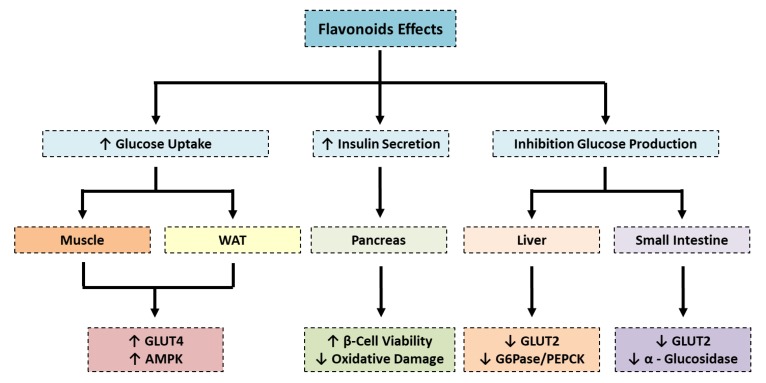Figure 2.
Effect of flavonoids on glucose metabolism. The main effect of flavonoids on skeletal muscle and adipose tissue is the enhancement of glucose uptake mediated by the translocation of GLUT4 to the plasmatic membrane. Conversely, in the liver, flavonoids act in a different way. They try to reduce glucose blood levels both by reducing gluconeogenic genes (such as G6Pase and PEPCK) and therefore glucose production and GLUT2, and therefore preventing the release of glucose from liver to the bloodstream. The production of glucose is also prevented in the intestine by blocking the digestion of complex carbohydrates. In the pancreas, flavonoids predominantly reduce oxidative stress improving the viability of β-cell, consequently ameliorating insulin secretion. WAT: White adipose tissue; AMPK: AMP-activated protein kinase; GLUT4: glucose transporter type 4, GLUT 2: glucose transporter type 2, G6Pase: glucose-6-phosphatase, PEPCK: phosphoenolypyruvate carboxykinase.

